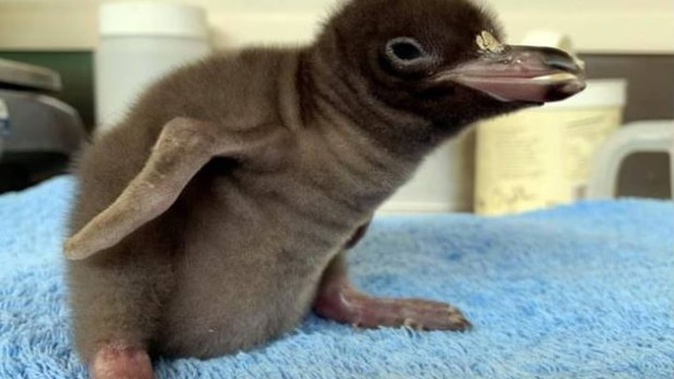
The same technology used to first detect the coronavirus has revealed the cause of a mysterious disease that’s been killing critically-endangered hoiho chicks.
The Kiwi researchers behind the new discovery have now developed a test to identify the highly fatal respiratory disease in future.
As at last count, New Zealand’s hoiho, or yellow-eyed penguin, population numbered just 4000 to 5000 mature individuals, with threats ranging from fishing and dogs to climate change and disease.
Over the 2021 hatching season, conservation officials were alarmed to find that a quarter of chicks from the mainland died of the disease.
Of 137 wild chicks admitted to the Dunedin Wildlife Hospital, 31 had shown signs of the illness within their first week of life – and 27 died just 12 to 24 hours after symptoms developed.
Just three were able to be successfully treated and returned to the nest.
It was only through extracting RNA from the tissue of dead chicks that scientists were able to pin-point what had killed them – a novel yet abundant gyrovirus.
“The virus is related to other gyroviruses that cause disease in other birds, including chickens,” said Otago University evolutionary virologist Dr Jemma Geoghegan.
The process involved next-generation sequencing technology used to reveal what pathogens were present.
“This is the same technology that Chinese scientists used to identify that a new coronavirus was causing a respiratory disease in humans, which of course was later named Sars-CoV-2.”
Geoghegan – one of our most visible scientists throughout the pandemic – led the penguin investigation alongside Otago University postdoctoral research fellow Dr Janelle Wierenga.
/cloudfront-ap-southeast-2.images.arcpublishing.com/nzme/D464MFHNPNBCXGPYSMGTFGM6TU.jpg)
Otago University evolutionary virologist Dr Jemma Geoghegan. Photo / Supplied
Their wider research group, which included the Dunedin Wildlife Hospital, Yellow-Eyed Penguin Trust, Department of Conservation, Ministry for Primary Industries, and Otago and Massey universities, later created a new special test to check for the virus.
The disease was initially identified in 2019, although historical epidemiological records showed the first suspected cases as early as 2015.
It presented as lung congestion and haemorrhage, and lymphnoid depletion in the spleen and bursa.
“In 2020 and 2021, the number of chick deaths from this disease increased four and five-fold, compared to 2019, with a mortality rate of more than 90 per cent,” Geoghegan said.
“Chicks usually succumbed to the disease within the first 10 days of life.”
Understanding the disease and the virus, so it could be prevented and treated, was the next step.
“Related viruses that affect chickens have vaccines to prevent them so a vaccine might be a possibility one day, but there is a lot more work to do,” she said.
“The disease has only really been noticed in the past few years, meaning it is likely a new virus in hoiho.
“This means the virus would have likely jumped from another animal – perhaps another seabird – to hoiho recently.
“This is part of our ongoing investigation – to try and understand from where and when the virus emerged.”
Hoiho are considered to be one of the rarest penguins in the world.
There are two populations; northern, which occupies mainland New Zealand and Stewart Island, and southern, which is the subantarctic Auckland Islands and Campbell Island.
The northern population has experienced a dramatic decline with numbers decreasing by 75 per cent over the past 30 years.
“It is feared they will be extinct on mainland Aotearoa within the next few decades, with infectious disease a significant contributor to their decline,” Geoghegan said.
“That’s why this collaborative effort is extremely important, so we can ensure the survival of this taonga.”
The research, just published in the journal Virology, was funded by the Morris Animal Foundation.
Take your Radio, Podcasts and Music with you









